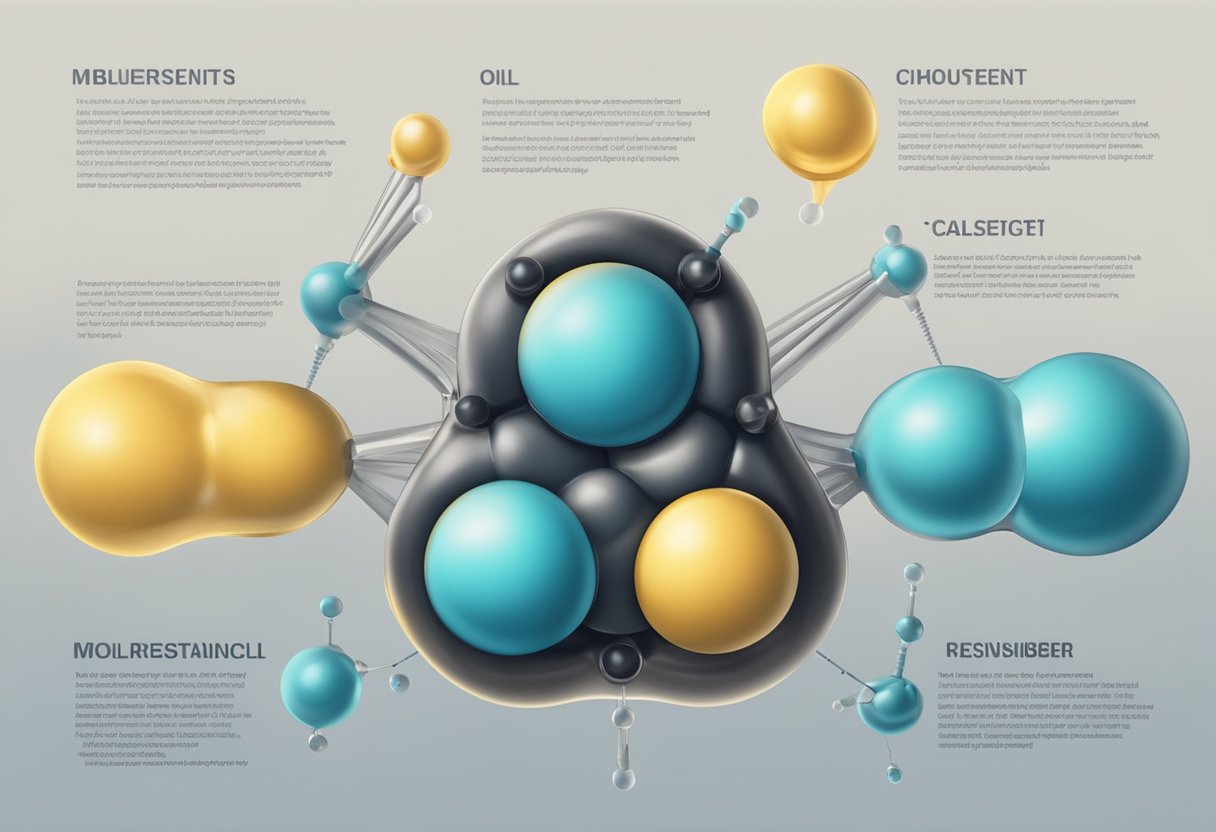Oil Resistant Synthetic Rubber: Properties and Applications
19/01/2024
Oil resistant synthetic rubber is a type of material that has become increasingly popular in recent years due to its unique properties. This type of rubber is designed to withstand exposure to various oils and chemicals without breaking down or deteriorating. It is commonly used in a wide range of applications, including automotive, industrial, and marine industries.

One of the main benefits of oil resistant synthetic rubber is its ability to maintain its integrity even when exposed to harsh chemicals. This makes it an ideal choice for use in environments where oil and other chemicals are present, such as in factories or on oil rigs. Additionally, this type of rubber is highly durable and can withstand extreme temperatures, making it a versatile material that can be used in a wide range of applications.
Overall, oil resistant synthetic pbat rubber is a valuable material that offers a range of benefits for various industries. As technology continues to advance, it is likely that we will see even more innovative uses for this material in the future.
Chemical Composition of Oil Resistant Synthetic Rubber

Oil resistant synthetic rubber is a type of elastomer that is specifically designed to resist the damaging effects of oil and other petroleum-based products. The chemical composition of oil resistant synthetic rubber is what gives it its unique properties and makes it an effective material for use in a variety of applications.
The primary component of oil resistant synthetic rubber is a polymer, which is a long chain of repeating units. The specific polymer used in the production of oil resistant synthetic rubber can vary depending on the desired properties of the final product. Some common polymers used in the production of oil resistant synthetic rubber include:
- Styrene Butadiene Rubber (SBR)
- Acrylonitrile Butadiene Rubber (NBR)
- Chloroprene Rubber (CR)
- Ethylene Propylene Diene Monomer (EPDM)
In addition to the polymer, oil resistant synthetic rubber also contains a variety of other additives that help to enhance its performance. These additives can include:
- Fillers: These are materials that are added to the rubber to improve its strength, stiffness, and resistance to abrasion. Common fillers used in oil resistant synthetic rubber include carbon black, silica, and clay.
- Plasticizers: These are materials that are added to the rubber to make it more flexible and easier to process. Common plasticizers used in oil resistant synthetic rubber include oils, esters, and phthalates.
- Antioxidants: These are materials that are added to the rubber to prevent it from degrading over time due to exposure to oxygen. Common antioxidants used in oil resistant synthetic rubber include phenols, amines, and phosphites.
- Vulcanizing Agents: These are materials that are added to the rubber to promote cross-linking between the polymer chains, which increases the strength and durability of the final product. Common vulcanizing agents used in oil resistant synthetic rubber include sulfur and peroxides.
Overall, the chemical composition of oil resistant synthetic rubber is a complex mixture of polymers, fillers, plasticizers, antioxidants, and vulcanizing agents. By carefully selecting and blending these materials, manufacturers are able to produce a wide range of oil resistant synthetic rubber products that are durable, flexible, and resistant to the damaging effects of oil and other petroleum-based products.
Properties of Oil Resistant Synthetic Rubber

Heat Resistance
Oil-resistant synthetic rubber is known for its excellent heat resistance properties. It can withstand high temperatures without losing its physical properties, making it suitable for use in high-temperature applications. The heat resistance of oil-resistant synthetic rubber is due to the presence of heat stabilizers, which prevent the rubber from breaking down when exposed to high temperatures.
Chemical Stability
Oil-resistant synthetic rubber is highly resistant to chemicals, making it ideal for use in harsh environments where exposure to chemicals is common. It can withstand exposure to a wide range of chemicals without losing its physical properties. The chemical stability of oil-resistant synthetic rubber is due to the presence of chemical stabilizers, which prevent the rubber from breaking down when exposed to chemicals.
Physical Durability
Oil-resistant synthetic rubber is highly durable and can withstand wear and tear, making it suitable for use in applications where physical durability is important. It can withstand exposure to harsh environments without losing its physical properties. The physical durability of oil-resistant synthetic rubber is due to its unique molecular structure, which makes it resistant to abrasion and deformation.
In summary, oil-resistant synthetic rubber is a highly versatile material that offers excellent heat resistance, chemical stability, and physical durability. Its unique properties make it ideal for use in a wide range of applications, including automotive, aerospace, and industrial applications.
Manufacturing Processes

Polymerization
Oil resistant synthetic rubber is manufactured through a process called polymerization. Polymerization is the process of combining monomers, or small molecules, to form a polymer, or a long chain of repeating units. The monomers used in the production of oil resistant synthetic rubber are typically butadiene and styrene.
The polymerization process can be carried out using two methods: emulsion polymerization and solution polymerization. In emulsion polymerization, the monomers are mixed with water and a surfactant to form an emulsion. The emulsion is then heated and a catalyst is added to initiate the polymerization reaction. In solution polymerization, the monomers are dissolved in a solvent and a catalyst is added to initiate the reaction.
Curing Methods
After the polymerization process is complete, the oil resistant synthetic rubber must be cured to achieve its desired properties. Curing is the process of cross-linking the polymer chains to form a three-dimensional network. This network gives the rubber its elasticity and durability.
There are several methods of curing oil resistant synthetic rubber, including sulfur curing, peroxide curing, and radiation curing. Sulfur curing involves mixing the rubber with sulfur and heating it to a high temperature. The sulfur reacts with the rubber to form cross-links. Peroxide curing involves adding a peroxide to the rubber and heating it to a high temperature. The peroxide reacts with the rubber to form cross-links. Radiation curing involves exposing the rubber to high-energy radiation, such as ultraviolet light or electron beams, to form cross-links.
Overall, the manufacturing processes involved in producing oil resistant synthetic rubber are complex and require careful attention to detail. The resulting rubber is highly resistant to oil and other petroleum-based products, making it an ideal material for use in a variety of industrial applications.
Applications in Industry
Automotive
Oil resistant synthetic rubber has become a popular material in the automotive industry due to its ability to withstand exposure to oil and other petroleum-based fluids. It is used in a variety of applications such as gaskets, seals, and hoses. These components are critical for the proper functioning of engines, transmissions, and other systems in vehicles. Oil resistant synthetic rubber ensures that these components maintain their integrity and do not degrade over time, resulting in longer-lasting and more reliable vehicles.
Aerospace
In the aerospace industry, oil resistant synthetic rubber is used in a variety of applications such as fuel hoses, seals, and gaskets. These components are critical for the safe and efficient operation of aircraft. Oil resistant synthetic rubbers ensures that these components can withstand exposure to fuel and other petroleum-based fluids without degrading or failing. This helps to ensure the safety of passengers and crew, as well as the integrity of the aircraft itself.
Construction
Oil resistant synthetic rubber is also widely used in the construction industry. It is used in a variety of applications such as seals, gaskets, and hoses for heavy machinery and equipment. These components are critical for the proper functioning of construction equipment, which is essential for completing construction projects on time and within budget. Oil resistant synthetic rubbers ensures that these components maintain their integrity and do not degrade over time, resulting in longer-lasting and more reliable equipment.
Overall, oil resistant synthetics rubber is a versatile material that has a wide range of applications in various industries. Its ability to withstand exposure to oil and other petroleum-based fluids makes it a popular choice for components that are critical for the proper functioning of machinery and equipment.
Standards and Specifications
ISO Standards
The International Organization for Standardization (ISO) has developed several standards for oil-resistant synthetic rubbers. The ISO 7326:2016 standard specifies the requirements and test methods for rubber hoses for use in the oil industry. It covers hoses for use with petroleum-based fluids, lubricants, and hydraulic fluids. The standard includes requirements for the physical properties of the rubber, such as tensile strength, elongation at break, and hardness. It also includes tests for resistance to oil, ozone, and weathering.
Another ISO standard, ISO 1817:2015, specifies the requirements for rubber seals used in hydraulic applications with fluids based on mineral oils and hydraulic fluids. The standard includes requirements for the physical properties of the rubber, such as compression set, tensile strength, and elongation at break. It also includes tests for resistance to oil, ozone, and aging.
ASTM International
ASTM International, formerly known as the American Society for Testing and Materials, has developed several standards for oil-resistants synthetic rubber. ASTM D471-16 is a standard test method for rubber property—effect of liquids. It covers the resistance of rubber materials to liquids such as oils and fuels. The test method involves exposing the rubber to the liquid for a specified period and measuring the change in its physical properties.
ASTM D2000-18 is a standard classification system for rubber products in automotive applications. It includes a letter and number code that specifies the type of rubber, its physical properties, and its resistance to various fluids, including oil. The code helps manufacturers and users of rubber products to specify the appropriate material for their application.
Overall, adherence to these standards and specifications ensures that oil-resistant synthetics rubber products are of high quality and can withstand exposure to various oils and fluids.
Testing and Quality Control
Abrasion Tests
One of the primary concerns when it comes to oil-resistant synthetics rubber is its ability to withstand wear and tear. Abrasion tests are conducted to measure the resistance of the rubber to wear caused by friction. The most commonly used test is the Taber Abrasion test, which involves rotating a wheel with abrasive material against the rubber sample. The weight loss of the sample is measured after a certain number of rotations. The lower the weight loss, the better the abrasion resistance of the rubber.
Oil Immersion Tests
Oil immersion tests are conducted to determine the ability of the rubber to resist swelling and deterioration when exposed to oil. The tests involve immersing the rubber sample in oil for a certain period of time and then measuring its weight and physical properties such as hardness and tensile strength. The results of these tests help determine the suitability of the rubber for use in oil-resistant applications.
Quality control measures are put in place to ensure that the oil-resistant synthetic rubbers meets the required standards. These measures include batch testing, where samples from each batch of rubber are tested to ensure that they meet the required specifications. In addition, regular testing is conducted on finished products to ensure that they meet the required performance standards.
Overall, testing and quality control are crucial in ensuring that oil-resistant synthetic rubbers meets the required performance standards and is suitable for use in various applications.
Environmental Impact and Sustainability
Oil resistant synthetic rubbers has become increasingly popular due to its durability and resistance to harsh environments. However, it is important to consider the environmental impact and sustainability of this material.
One positive aspect of oil resistant synthetic rubber is its ability to withstand exposure to oil and other chemicals, which can reduce the need for frequent replacements and therefore decrease waste. Additionally, synthetic rubber can be recycled and reused in various applications, further reducing its environmental impact.
However, the production of synthetic rubber requires the use of fossil fuels and other non-renewable resources. This can contribute to greenhouse gas emissions and other environmental issues. It is important for manufacturers to prioritize sustainable practices and consider the entire life cycle of the product, from production to disposal.
Overall, while oil resistant synthetic rubbers has its benefits, it is important to consider the environmental impact and sustainability of its production and use. By prioritizing sustainable practices and considering the entire life cycle of the product, manufacturers can reduce the environmental impact of this material.
Advancements in Synthetic Rubber Technology
Nanotechnology
Nanotechnology has played a significant role in the development of oil-resistant synthetic rubbers. The use of nanofillers has been found to improve the mechanical properties of rubber, such as its strength and flexibility. The addition of nanofillers to synthetic rubber has also been shown to improve its oil resistance, making it more suitable for use in various industrial applications.
One example of nanotechnology being used in synthetic rubber is the addition of carbon nanotubes (CNTs). CNTs have a high aspect ratio, making them ideal for reinforcing rubber. The addition of CNTs to synthetic rubber has been shown to improve its mechanical properties, such as its tensile strength and elongation at break. Furthermore, CNTs have been found to improve the oil resistance of synthetic rubber.
Bio-based Alternatives
In recent years, there has been a growing interest in bio-based alternatives to synthetic rubber. Bio-based rubber is made from renewable resources, such as plants, and is biodegradable, making it a more environmentally friendly option.
One example of a bio-based alternative to synthetic rubber is guayule rubber. Guayule is a desert shrub that is native to the southwestern United States and northern Mexico. The latex from the guayule plant can be used to produce rubber that has similar properties to synthetic rubber. Furthermore, guayule rubber has been found to be more oil-resistant than natural rubber.
Another bio-based alternative to synthetic rubber is dandelion rubber. Dandelion rubber is made from the latex of the Russian dandelion plant. Like guayule rubber, dandelion rubber has similar properties to synthetic rubber and is more oil-resistant than natural rubber.
In conclusion, the advancements in synthetic rubber technology have led to the development of oil-resistant synthetic rubbers that is suitable for use in various industrial applications. Nanotechnology has played a significant role in improving the mechanical properties and oil resistance of synthetic rubber. Furthermore, the development of bio-based alternatives to synthetic rubber has provided a more environmentally friendly option for the production of rubber.
Market Trends and Economic Factors
Oil-resistant synthetic rubber is a popular material used in various industries, including automotive, aerospace, and oil and gas. The demand for this material is expected to increase in the coming years due to several market trends and economic factors.
One of the primary drivers of the market for oil-resistant synthetic rubber is the growth of the automotive industry. With the increasing demand for automobiles, the demand for oil-resistant synthetic rubbers used in tires, gaskets, and other automotive components is also expected to rise. Additionally, the increasing demand for lightweight and fuel-efficient vehicles is expected to further boost the demand for this material.
Another important factor driving the market for oil-resistant synthetic rubbers is the growth of the oil and gas industry. This material is widely used in oil and gas pipelines, hoses, and seals, and the increasing exploration and production activities in the industry are expected to drive the demand for this material.
The economic factors also play a crucial role in the market for oil-resistant synthetic rubbers. The fluctuations in the prices of crude oil and natural gas directly impact the demand for this material. The increasing prices of crude oil and natural gas are expected to increase the demand for oil-resistant synthetic rubbers, while the decreasing prices may have a negative impact on the market.
In addition, the increasing focus on sustainability and environmental regulations is also expected to impact the market for oil-resistant synthetic rubbers. The manufacturers are increasingly focusing on developing eco-friendly and sustainable materials, which may impact the demand for oil-resistant synthetic rubbers in the long run.
Overall, the market for oil-resistant synthetic rubbers is expected to grow in the coming years, driven by the increasing demand from the automotive and oil and gas industries, and the economic factors such as crude oil and natural gas prices.
Challenges and Limitations
Temperature Extremes
Oil-resistant synthetic rubbers is an excellent material for use in applications where it is exposed to oil, but it has limitations when it comes to dealing with temperature extremes. At high temperatures, the rubber can become soft and lose its shape, while at low temperatures, it can become hard and brittle, leading to cracking and failure.
To overcome these challenges, manufacturers have developed specialized formulations that can withstand temperature extremes. However, these specialized formulations can be more expensive, which can limit their use in certain applications.
Material Cost
Another challenge of using oil-resistant synthetic rubbers is its material cost. Compared to traditional rubber materials, oil-resistant synthetic rubbers can be more expensive, which can make it less attractive for use in applications where cost is a primary concern.
However, the benefits of using oil-resistant synthetic rubbers, such as its superior resistance to oil and other chemicals, often outweigh the higher material cost. In many cases, the increased lifespan and reduced maintenance costs of using oil-resistant synthetic rubbers can make it a more cost-effective option in the long run.
Overall, while oil-resistant synthetic rubbers has its challenges and limitations, it remains a valuable material for use in a variety of applications where resistance to oil and other chemicals is critical. With proper formulation and careful consideration of its limitations, oil-resistant synthetic rubbers can provide excellent performance and durability.




